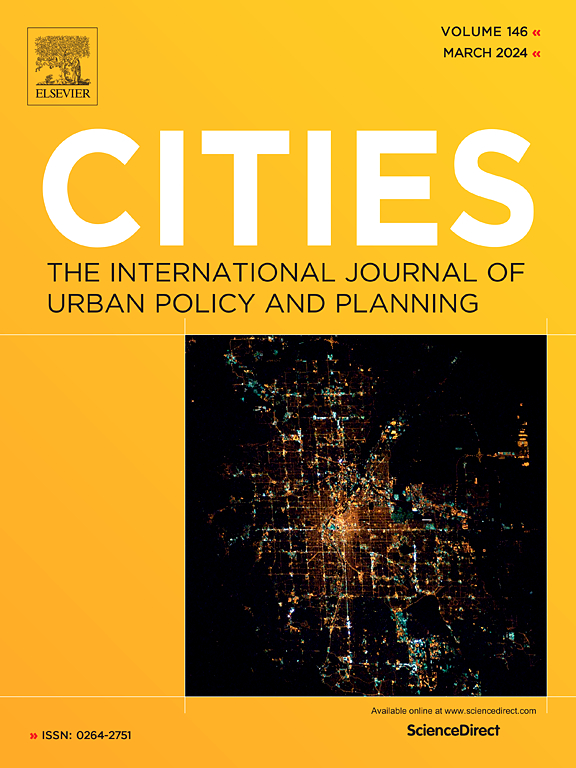通过整合大数据和小数据,解码步行便利性对老年人步行行为的空间影响
IF 6
1区 经济学
Q1 URBAN STUDIES
引用次数: 0
摘要
虽然适宜步行的环境能促进老年人的步行,但很少有研究结合大数据和小数据来研究适宜步行与老年人步行行为之间的关系。本研究以中国深圳为研究区域,通过整合大数据和小数据,探讨步行环境对老年人步行行为的影响。本研究从安全、便利、连续性和吸引力四个方面的步行需求出发,建立了步行适宜性框架。我们从街景图像和各种开放数据源中提取了适宜步行的要素。我们从全市 459 份调查问卷中量化了步行环境要素的重要性,并以此为权重计算出老年人步行环境得分。我们从 2021 年 6 个月的手机数据中确定了超过 2700 万次老年人步行出行。我们使用地理加权泊松回归模型来研究步行便利性对老年人步行出行的空间影响。结果显示,老年人最重要的步行需求是安全,其次依次是吸引力、便利性和连续性。老年人步行便利性得分较高的地区主要位于城区和郊区副中心。在内城郊区,步行便利性对老年人步行出行有很大的积极作用。根据研究结果,我们制定了干预策略,以营造对老年人友好的步行环境。本文章由计算机程序翻译,如有差异,请以英文原文为准。
Decoding the spatial effects of walkability on walking behavior among older adults by integrating big data and small data
While a walkable environment promotes older adults' walking, few studies have incorporated big and small data to examine the relationship between walkability and older adults' walking behaviors. Using Shenzhen in China as the study area, this study explores walkability's effects on senior walking behaviors by integrating big and small data. The walkability framework is developed regarding four pedestrian needs: safety, convenience, continuity, and attractiveness. The walkability elements are extracted from street view images and diverse open data sources. We quantify the importance of walkability elements from 459 questionnaires across the city as weights to calculate elderly walkability scores. More than 27 million senior walking trips were identified from 6 months of mobile phone data in 2021. We used a geographically weighted Poisson regression model to examine the spatial effects of walkability on senior walking trips. The results show that the most important pedestrian need for seniors is safety, followed in order by attractiveness, convenience, and continuity. Areas with high elderly walkability scores are largely in urban areas and suburban subcenters. Walkability exerts a strong positive role on senior walking trips in the inner suburbs. Based on the findings, we tailor intervention strategies to foster age-friendly walking environments.
求助全文
通过发布文献求助,成功后即可免费获取论文全文。
去求助
来源期刊

Cities
URBAN STUDIES-
CiteScore
11.20
自引率
9.00%
发文量
517
期刊介绍:
Cities offers a comprehensive range of articles on all aspects of urban policy. It provides an international and interdisciplinary platform for the exchange of ideas and information between urban planners and policy makers from national and local government, non-government organizations, academia and consultancy. The primary aims of the journal are to analyse and assess past and present urban development and management as a reflection of effective, ineffective and non-existent planning policies; and the promotion of the implementation of appropriate urban policies in both the developed and the developing world.
 求助内容:
求助内容: 应助结果提醒方式:
应助结果提醒方式:


